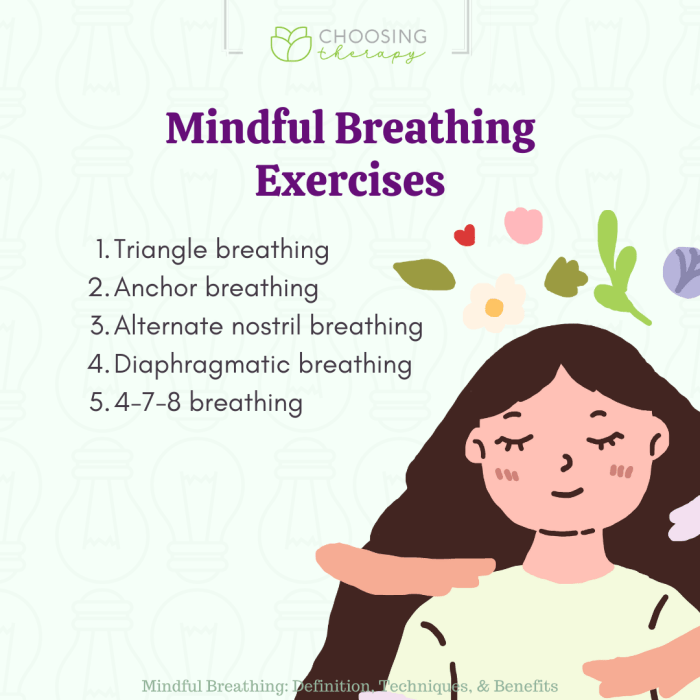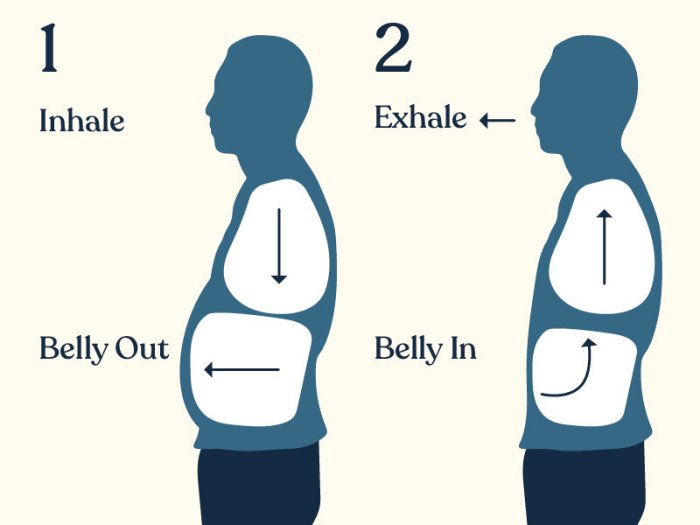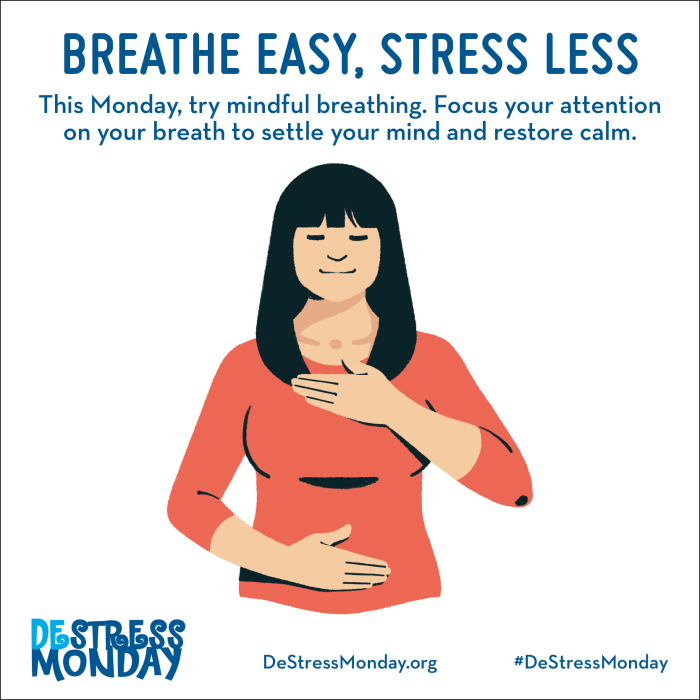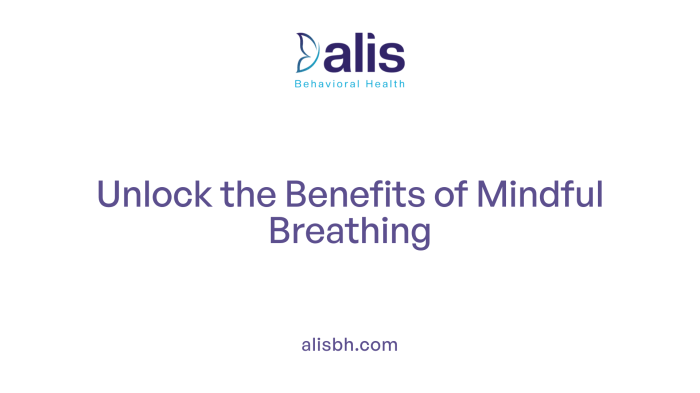Kicking off with 3 Breathing Methods to Enhance Mindfulness Meditation, this guide dives into techniques that can elevate your meditation sessions. From diaphragmatic breathing to counting breaths, discover how to enhance your mindfulness practice effortlessly.
Introduction to Breathing Methods

Proper breathing techniques play a crucial role in enhancing mindfulness meditation by helping individuals achieve a state of focused relaxation. By paying attention to the breath, practitioners can deepen their mindfulness practice and experience a greater sense of calm and clarity.Breathing methods can improve focus during meditation by providing a point of concentration for the mind. As individuals tune into the rhythm of their breath, they become more present in the moment, reducing distractions and enhancing overall mindfulness.Traditional breathing practices used in mindfulness meditation include diaphragmatic breathing, also known as belly breathing, where the focus is on expanding the abdomen with each inhale and contracting it with each exhale.
Another common technique is mindful breathing, which involves observing the breath without trying to control it, simply noticing the sensation as air enters and leaves the body.
Benefits of Proper Breathing Techniques
- Enhances focus and concentration during meditation
- Promotes relaxation and reduces stress
- Increases mindfulness and present moment awareness
Diaphragmatic Breathing

Diaphragmatic breathing, also known as abdominal breathing or deep breathing, is a technique that involves engaging the diaphragm, a muscle located at the base of the lungs. Unlike shallow chest breathing, which primarily involves the chest and shoulders, diaphragmatic breathing focuses on expanding the abdomen as you inhale and contracting it as you exhale. This allows for deeper, slower breaths that engage the diaphragm for a more efficient exchange of oxygen and carbon dioxide in the body.
Step-by-Step Guide to Practicing Diaphragmatic Breathing
- Find a comfortable and quiet place to sit or lie down.
- Place one hand on your chest and the other on your abdomen.
- Inhale slowly through your nose, feeling your abdomen rise as you fill your lungs with air.
- Exhale slowly through your mouth, feeling your abdomen fall as you release the air from your lungs.
- Continue this slow and deep breathing pattern for several minutes, focusing on the rise and fall of your abdomen.
Benefits of Diaphragmatic Breathing for Mindfulness Meditation
- Improves oxygen exchange in the body, promoting relaxation and reducing stress.
- Helps calm the mind and enhance focus during meditation practice.
- Engages the parasympathetic nervous system, leading to a sense of calm and well-being.
- Supports emotional regulation and helps manage anxiety and depression symptoms.
Box Breathing Technique

The Box Breathing Technique, also known as Square Breathing, is a simple yet powerful breathing exercise that helps promote relaxation, reduce stress, and increase mindfulness during meditation. This technique is rooted in ancient yogic practices and has been used for centuries to calm the mind and body.
Four Phases of the Box Breathing Technique
The Box Breathing Technique consists of four phases, each lasting for an equal duration:
- Inhale: Begin by inhaling slowly and deeply through your nose for a count of four seconds. Focus on filling your lungs completely with air.
- Hold: After inhaling, hold your breath for a count of four seconds. This pause allows you to retain the oxygen in your lungs and prepare for the next phase.
- Exhale: Slowly exhale through your mouth for another count of four seconds. Empty your lungs completely and release any tension or stress as you breathe out.
- Hold: Lastly, hold your breath again for a count of four seconds before beginning the cycle anew. This moment of stillness helps you reset and prepare for the next breath.
Variations of the Box Breathing Technique, 3 Breathing Methods to Enhance Mindfulness Meditation
There are several variations of the Box Breathing Technique that you can experiment with to enhance your mindfulness meditation practice:
- Extended Counts: Increase the duration of each phase from four seconds to six or eight seconds for a more profound calming effect.
- Visualizations: Pair each phase of the breathing technique with a mental image, such as drawing a square in your mind as you inhale, hold, exhale, and hold again.
- Mantras: Repeat a soothing mantra or affirmation silently to yourself during each phase of the box breathing cycle to deepen your sense of relaxation and focus.
Counted Breaths Meditation: 3 Breathing Methods To Enhance Mindfulness Meditation

Counted breaths meditation is a simple yet powerful technique used to enhance mindfulness during meditation practice. By focusing on counting each inhalation and exhalation, individuals can cultivate a deeper sense of awareness and presence in the moment.
How Counted Breaths Meditation Works
- Begin by finding a comfortable seated position and closing your eyes.
- Take a few deep breaths to center yourself and then start counting each inhale and exhale. For example, inhale – one, exhale – two, and so on.
- If you lose track, simply start over from one without judgment or frustration.
- Continue this practice for a set amount of time, such as 5-10 minutes, gradually increasing as you become more comfortable with the technique.
Potential Challenges and Benefits
- Challenges: Some may find it difficult to stay focused on counting without getting distracted by thoughts or external stimuli. Consistency and patience are key to overcoming these challenges.
- Benefits: Counted breaths meditation can help improve concentration, reduce stress and anxiety, and enhance overall mindfulness. It provides a structured approach to meditation for beginners and can deepen the practice for more experienced meditators.
Closing Notes

In conclusion, incorporating these 3 breathing methods into your mindfulness meditation routine can bring a new level of focus and relaxation to your practice. Elevate your meditation experience with these powerful techniques and enjoy the benefits of enhanced mindfulness.